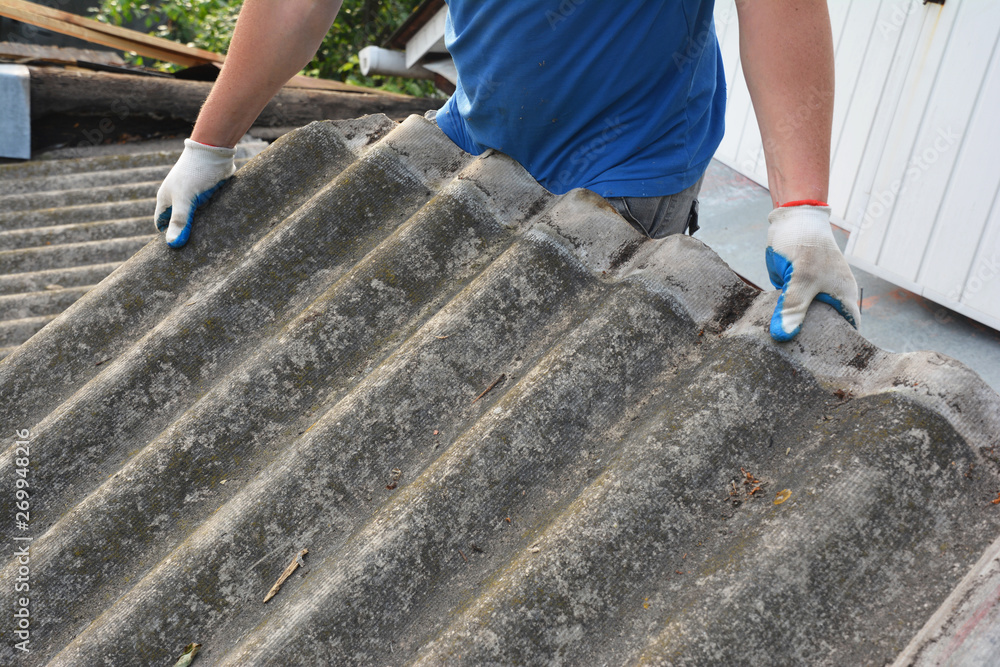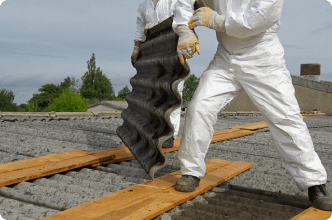Educational Resources On Asbestos Safety What To Do If You Find Asbestos
Asbestos, a naturally occurring mineral, was once broadly utilized in development materials because of its heat-resistant properties. Unfortunately, it has been linked to severe health issues, together with lung cancer and mesothelioma, making the asbestos removal process crucial for public safety. When it comes to removing asbestos, a methodical approach is crucial to minimize health risks and guarantee compliance with regulations. Understanding the method may help property homeowners manage their areas extra successfully.
The preliminary step within the asbestos removal process involves a thorough inspection of the premises. Trained professionals conduct a complete evaluation to identify any materials which will include asbestos. This includes inspecting insulation, flooring tiles, ceiling materials, and some other areas where asbestos may be present. Using specialized instruments, they will assess the situation of those materials to determine the chance degree.
Asbestos Removal Emergency Response Plans Risks Associated With Asbestos Roofs
Following the inspection, the subsequent phase is to develop a comprehensive motion plan. This plan outlines the necessary procedures for safe removal, including who will carry out the work and the way the location shall be secured. Communication with native regulatory bodies is essential at this stage, as varied legal guidelines could govern asbestos removal in specific areas. Understanding these regulations ensures that the project aligns with legal requirements.

Once the plan is in place, the pre-removal preparation begins - Understanding Asbestos Roof Hazards. Workers should gear up in specialized personal protective equipment (PPE) to forestall any asbestos fibers from changing into airborne. This typically contains disposable coveralls, respirators, and gloves. The worksite have to be cordoned off to prevent unauthorized entry through the removal process. Signage indicating the presence of hazardous materials can be strategically positioned across the area
Impact Of Weather On Asbestos Roof Removal Residential Asbestos Removal Services
With preparation complete, the precise removal can begin. Depending on the fabric type, the removal techniques could vary. Some materials can be rigorously scraped away, whereas others might require extra involved methods. The objective is to reduce disruption to the asbestos itself to avoid releasing fibers into the air. Employing moist removal methods, where water is applied to dampen the materials, may help keep fibers contained.
After the asbestos is eliminated, the realm must bear decontamination. This entails cleaning surfaces utilizing specialised HEPA vacuums to ensure that no residual fibers are left behind. The removal of PPE can also be dealt with fastidiously to avoid contamination outdoors the worksite. These meticulous steps are important in ensuring that the entire removal process is effective.
Asbestos Removal Equipment Used In Sydney Costs Associated With Removal And Replacement
Once the location has been cleaned and decontaminated, a follow-up inspection is important. This step verifies that all asbestos materials have been completely removed and that the world is safe for re-occupation. It additionally serves as an opportunity to assess whether additional renovations or repairs are needed. Only after passing this inspection will the world be deemed safe for public entry.
It's essential to grasp that whereas DIY asbestos removal could also be tempting, it poses vital risks - Asbestos Removal Certification In Sydney. Inexperienced people might inadvertently release harmful fibers into the air, exposing themselves and others to critical health hazards. Professional asbestos removal groups are skilled to handle these complexities and ensure safety throughout the process
In addition to the bodily removal, correct disposal of asbestos-containing materials is crucial. These materials must be transported to designated hazardous waste facilities that meet strict regulations. Failure to eliminate them appropriately can result in severe legal repercussions and environmental hazards. Professionals within the removal process are nicely versed in these disposal requirements.
Post-removal, it’s common for air quality testing to be conducted. This ensures that no airborne asbestos fibers remain, confirming that the area is safe for re-entry. Sampling and analysis are accomplished by way of licensed labs to offer correct results. Maintaining a secure environment should finally be the priority.
Consultation Services For Asbestos Roof Removal Find A Licensed Asbestos Removalist
The health implications of asbestos exposure cannot be overstated. As history has shown, the long-term exposure has led to numerous respiratory diseases and cancers, profoundly impacting lives. This makes the entire asbestos removal process not only a regulatory requirement however a significant public health intervention.
Equipping property homeowners with details about the asbestos removal process empowers them to make accountable selections. Whether it’s in residential homes or commercial buildings, understanding the procedure can facilitate better oversight and planning. Investing in professional services not solely assures compliance but additionally fosters peace of thoughts.
Training Programs For Asbestos Removal Professionals Safe, Reliable And Experienced Removal Services

In abstract, the asbestos removal process is intricate and multi-faceted, demanding consideration to detail at each stage. From identification and planning to safe removal and disposal, each facet plays a vital position in safeguarding health. Engaging qualified professionals can't be emphasized enough, as they convey expertise to mitigate risks successfully. Ultimately, the precedence remains clear: guaranteeing a safe environment free from asbestos hazards is essential for communities and people alike.
- Initial assessment involves a thorough inspection of the property to identify asbestos-containing materials and decide the extent of contamination.
- Sample collection is performed in compliance with safety regulations, making certain that any potential asbestos fibers are safely contained for analysis.
- A detailed abatement plan is created, outlining methods, timelines, and safety protocols for eradicating asbestos from the environment.
- Notification is given to relevant authorities and property occupants, guaranteeing compliance with local regulations concerning asbestos removal.
- Protective gear and equipment, similar to respirators and specialised suits, are utilized by employees to attenuate exposure to hazardous materials.
- Containment measures, together with plastic sheeting and adverse air stress units, are set up to prevent asbestos fibers from escaping the work area.
- Asbestos materials are fastidiously removed and safely packaged for disposal, adhering to strict guidelines to stop contamination.
- The web site undergoes thorough cleanup and decontamination processes to ensure that all remnants of asbestos are eliminated.
- Air quality testing is performed post-removal to substantiate that asbestos fibers are not current in the environment.
- Final documentation, including testing outcomes and removal reports, is offered to the property proprietor, confirming the completion of the abatement process.undefinedWhat is the primary step in the asbestos removal process?undefinedThe first step sometimes entails a thorough inspection of the property by certified professionals to identify areas containing asbestos, adopted by testing samples in a laboratory to substantiate its presence.
How do I know if I want asbestos removal?undefinedIf your house was constructed before the Nineteen Eighties and has materials that will contain asbestos (like insulation, tiles, or roofing), or when you discover injury or deterioration, it is advisable to have an assessment done by a professional expert.
Training Programs For Asbestos Removal Professionals Hazardous Materials & Disposal Services
Is asbestos removal dangerous?undefinedYes, asbestos removal may be hazardous because of the potential release of dangerous fibers into the air. It's important that only licensed and trained professionals handle the removal to make sure safe practices are adopted.
How long does the asbestos removal process take?undefinedThe duration varies based on the amount of fabric to be eliminated and the complexity of the job, however typical projects can range from a few hours to several days.
What ought to I do to prepare my home for asbestos removal?undefinedHomeowners should vacate the premises and secure pets. It's also essential to provide clear access to the work area and comply with any particular directions given by the removal staff.
Asbestos Risk Mitigation During Roofing Projects Removal And Disposal Of Asbestos
How much does asbestos removal cost?undefinedThe cost can vary widely based mostly on factors similar to the amount of asbestos present, the type of materials, and the situation. On common, owners can count on to pay between $1,500 to $30,000, relying on the scope of labor.
What happens after asbestos removal?undefinedPost-removal, a radical cleansing is performed, and air high quality testing may be carried out to ensure no asbestos fibers are present. A clearance certificate is usually issued if tests verify safety.
Do I must vacate my home in the course of the removal process?undefinedYes, it is generally recommended to vacate the home during removal, especially if the work is extensive. This minimizes exposure to potentially airborne asbestos fibers.
Asbestos Roofing Material Identification Residential Asbestos Removal Services
How can I be sure that the asbestos removal firm is trustworthy?undefinedLook for corporations that are licensed, insured, and have good evaluations. Verify their credentials, check for certifications, and ask for references from earlier shoppers to assess their reliability and expertise.
Clicking Here Continue